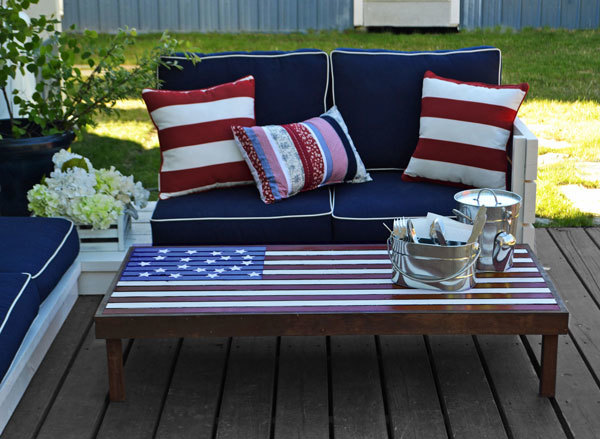
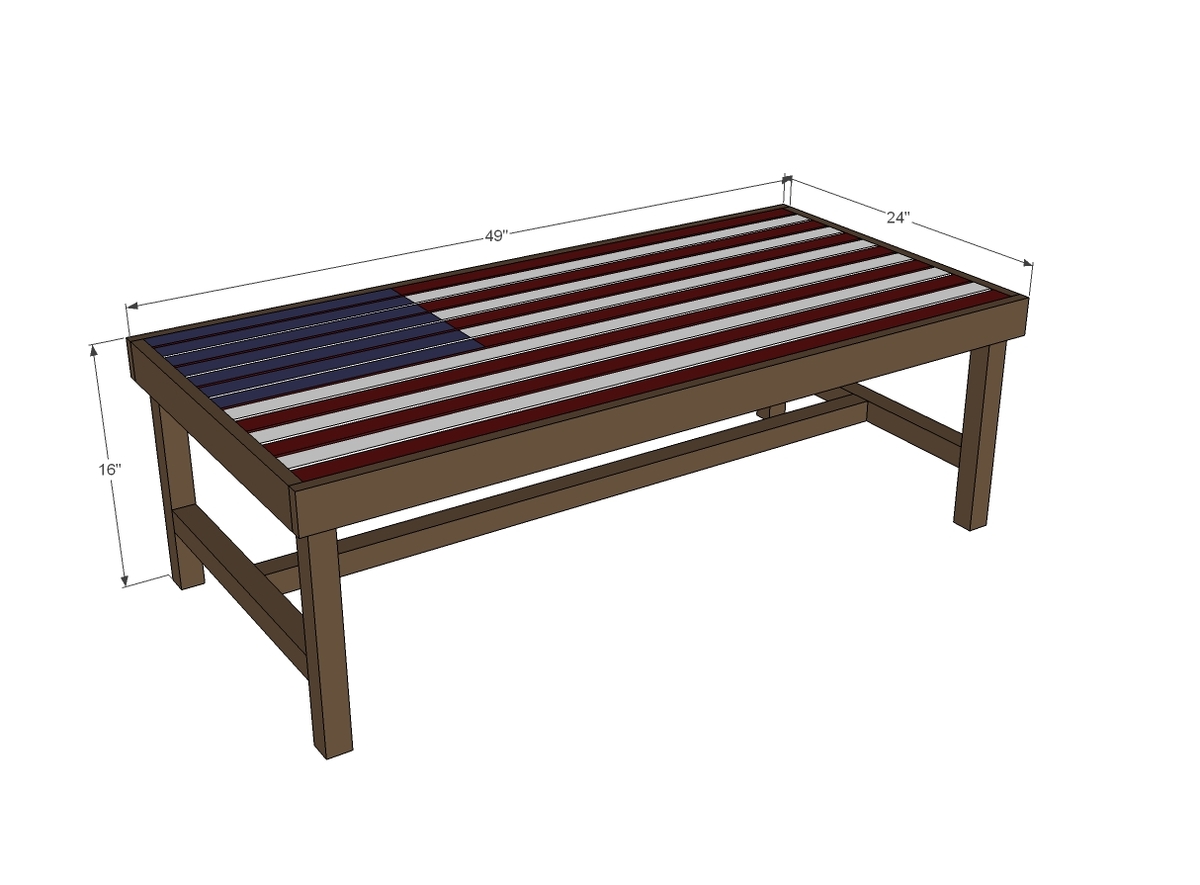
Preparation
4 - 2x2 @ 8 feet long
7 - 1x2 @ 8 feet long
2 - 1x3 @ 8 feet long
2 1/2" exterior self tapping screws OR 2 1/2" Pocket hole screws
1 1/4" or longer galvanized finish nails
7 - 2x2 @ 19 1/2" long
4 - 2x2 @ 15 1/4" long (legs)
3 - 2x2 @ 44 1/2" long
13 - 1x2 @ 47 1/2" long
2 - 1x3 @ 22 1/2" long
2 - 1x3 @ 49" long
Please read through the entire plan and all comments before beginning this project. It is also advisable to review the Getting Started Section. Take all necessary precautions to build safely and smartly. Work on a clean level surface, free of imperfections or debris. Always use straight boards. Check for square after each step. Always predrill holes before attaching with screws. Use glue with finish nails for a stronger hold. Wipe excess glue off bare wood for stained projects, as dried glue will not take stain. Be safe, have fun, and ask for help if you need it. Good luck!
Instructions
Step 1
Step 3
It is always recommended to apply a test coat on a hidden area or scrap piece to ensure color evenness and adhesion. Use primer or wood conditioner as needed.



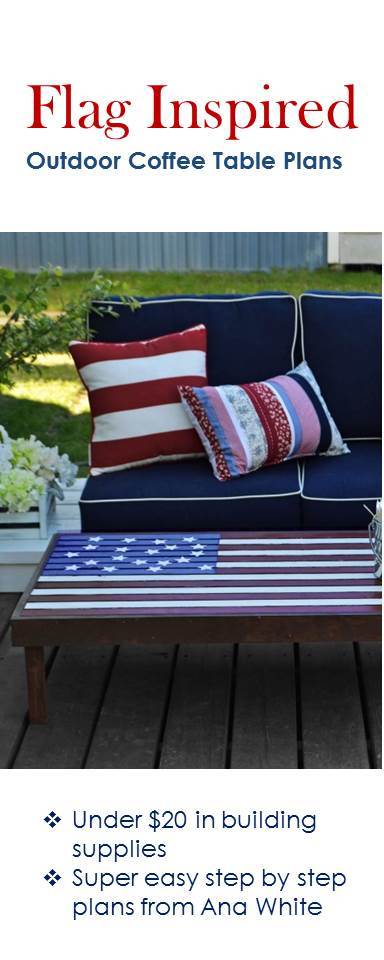
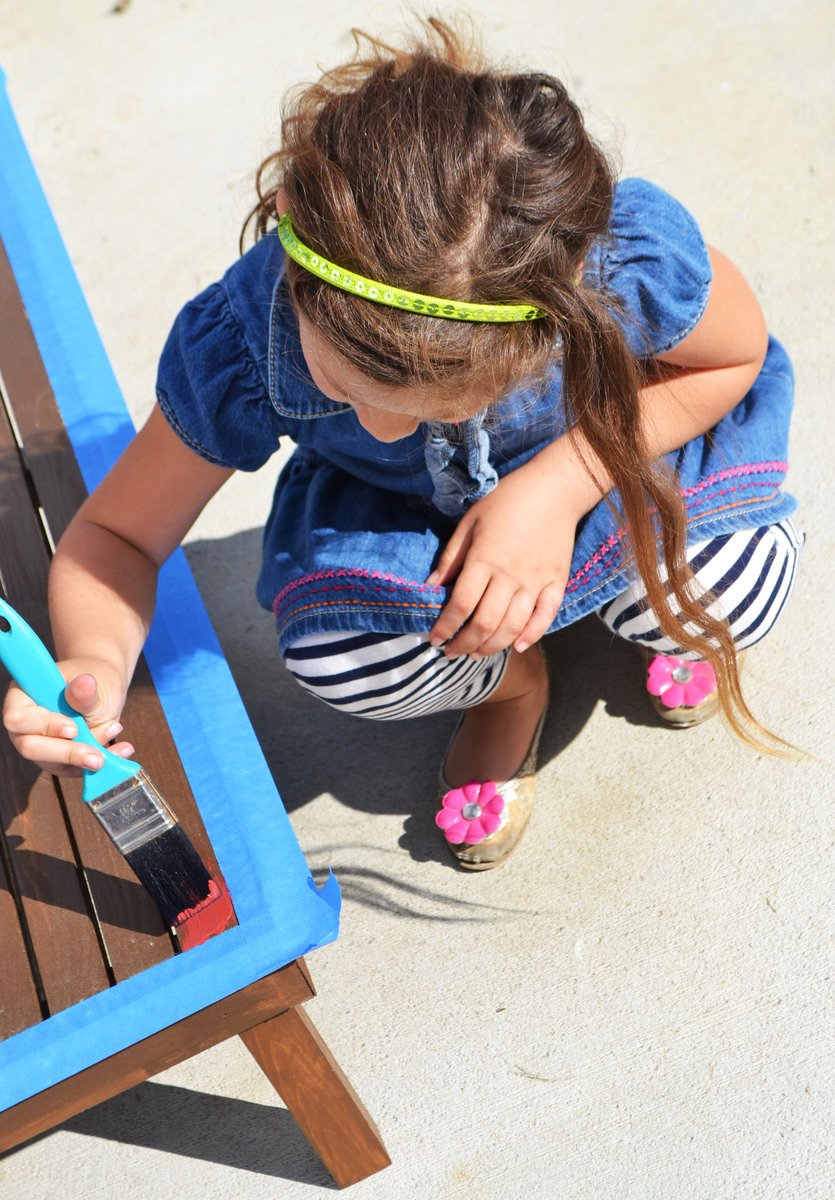
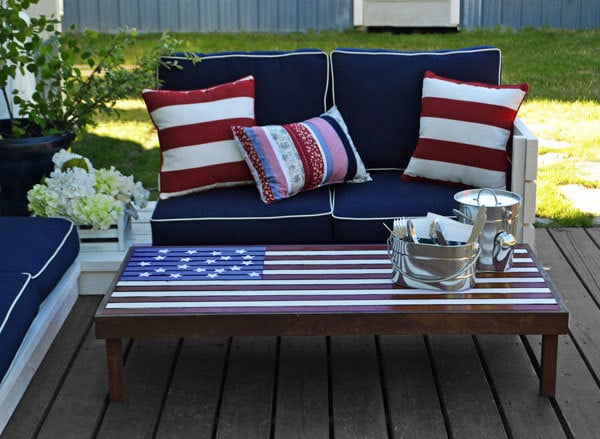
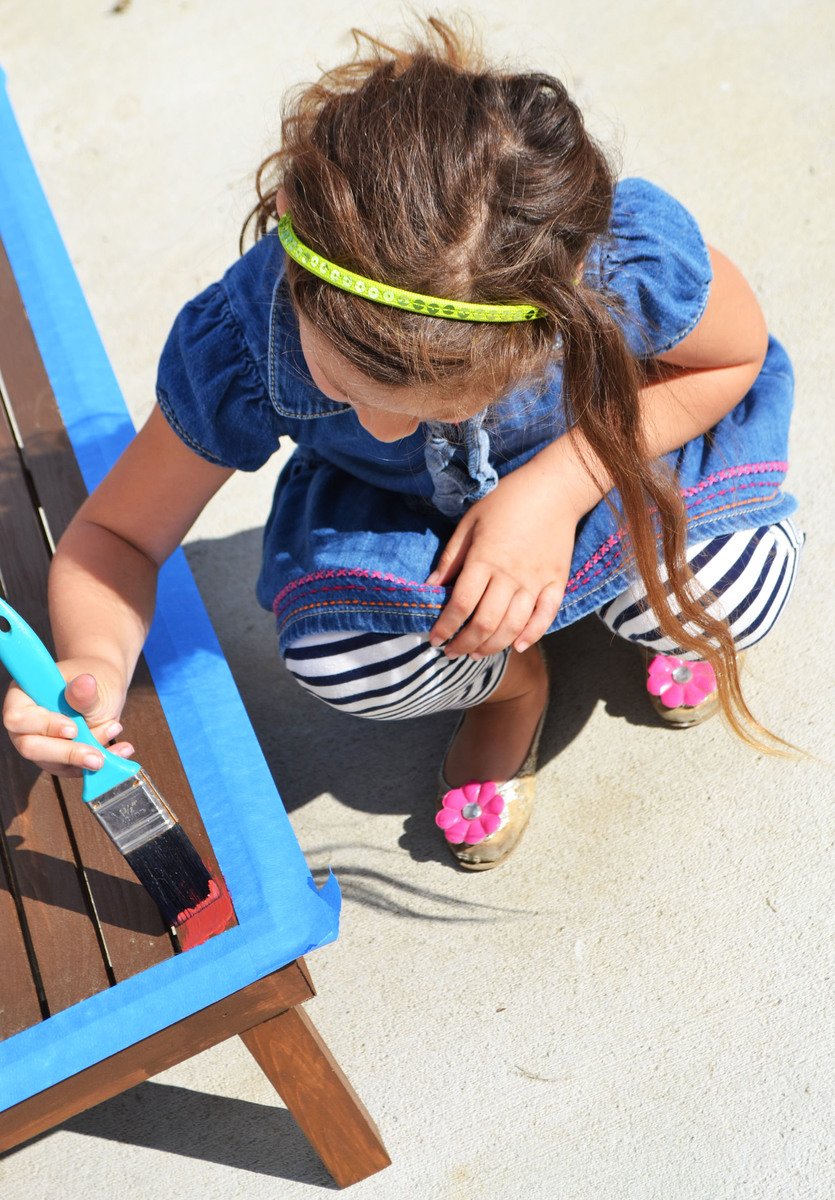







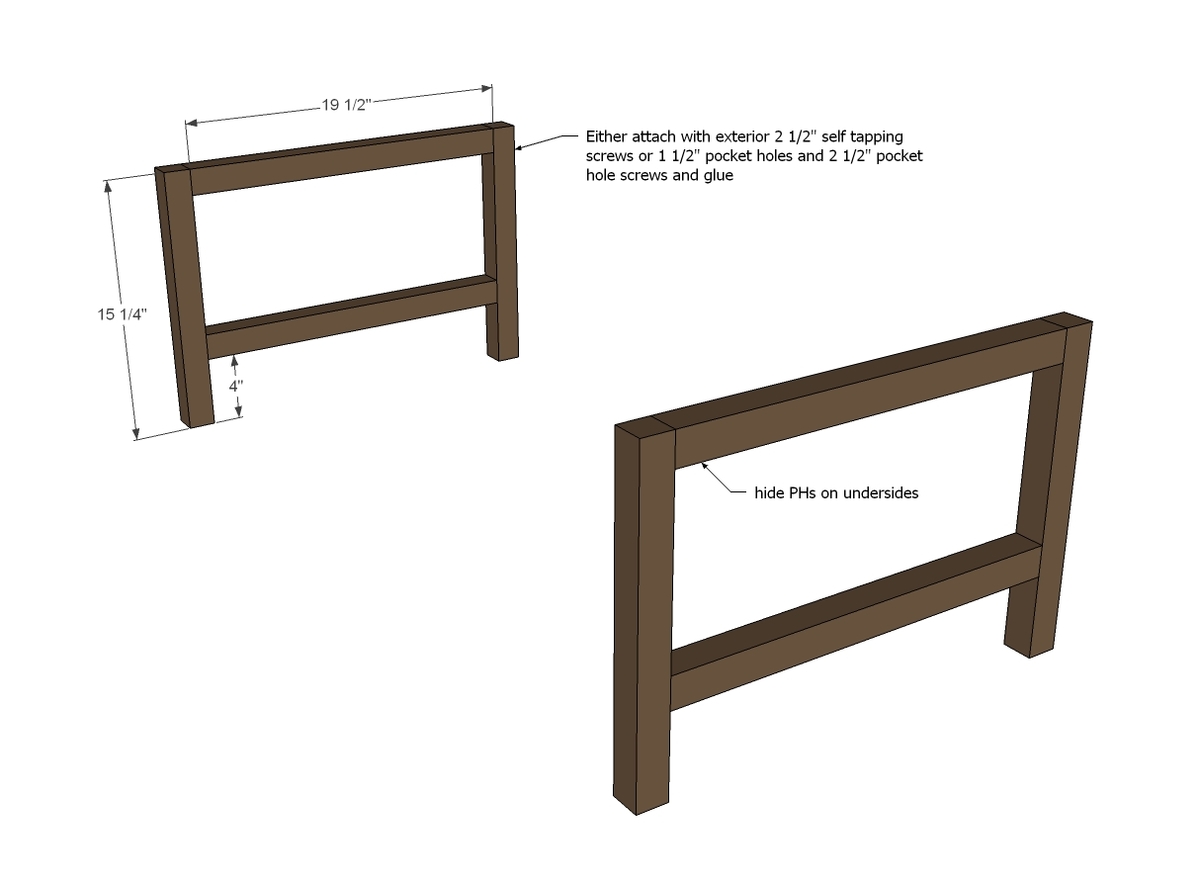
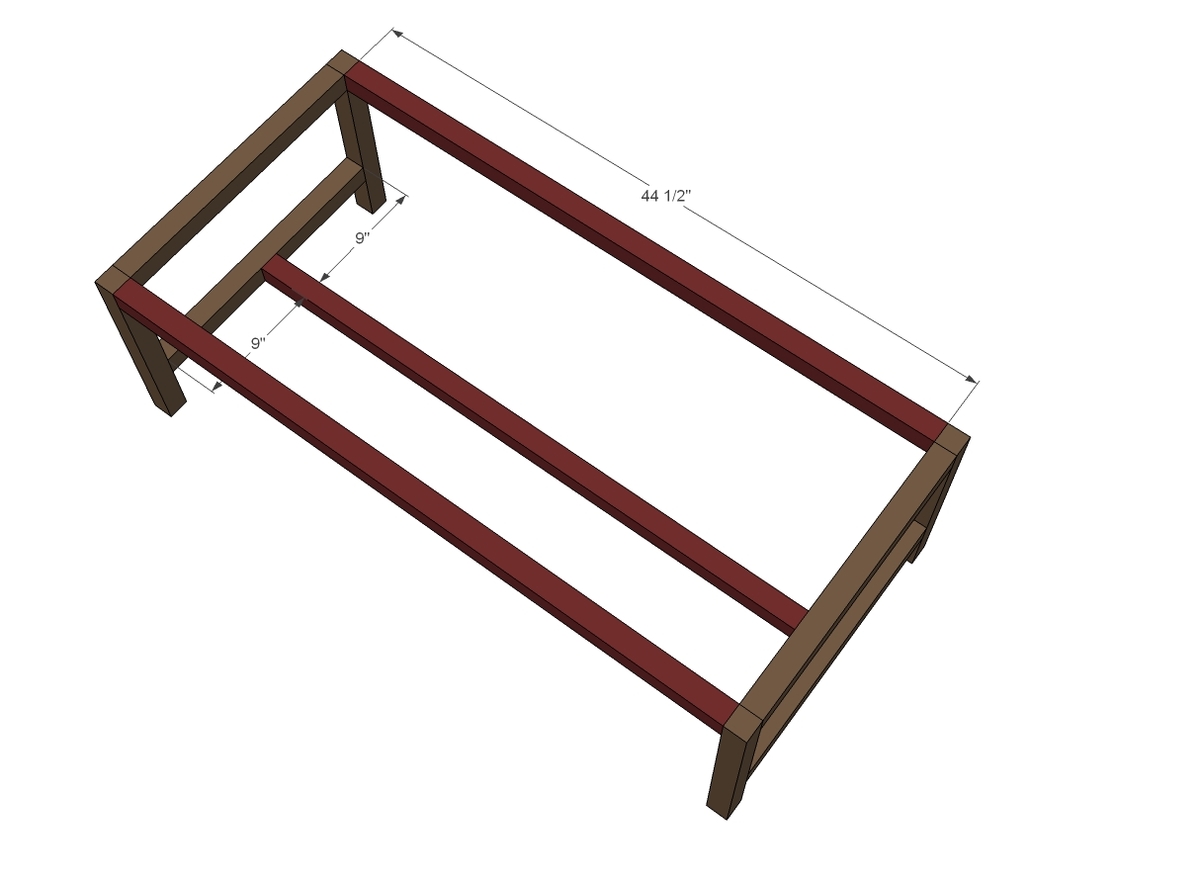
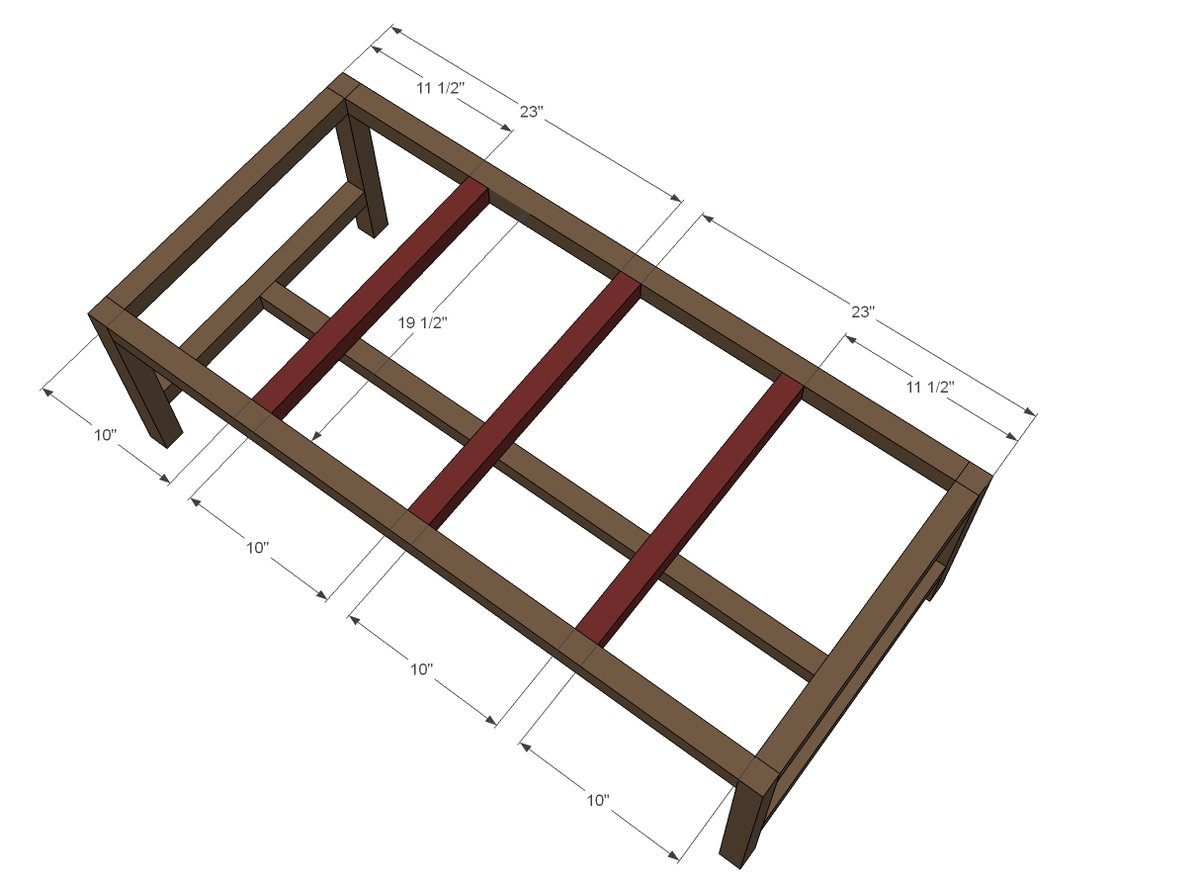
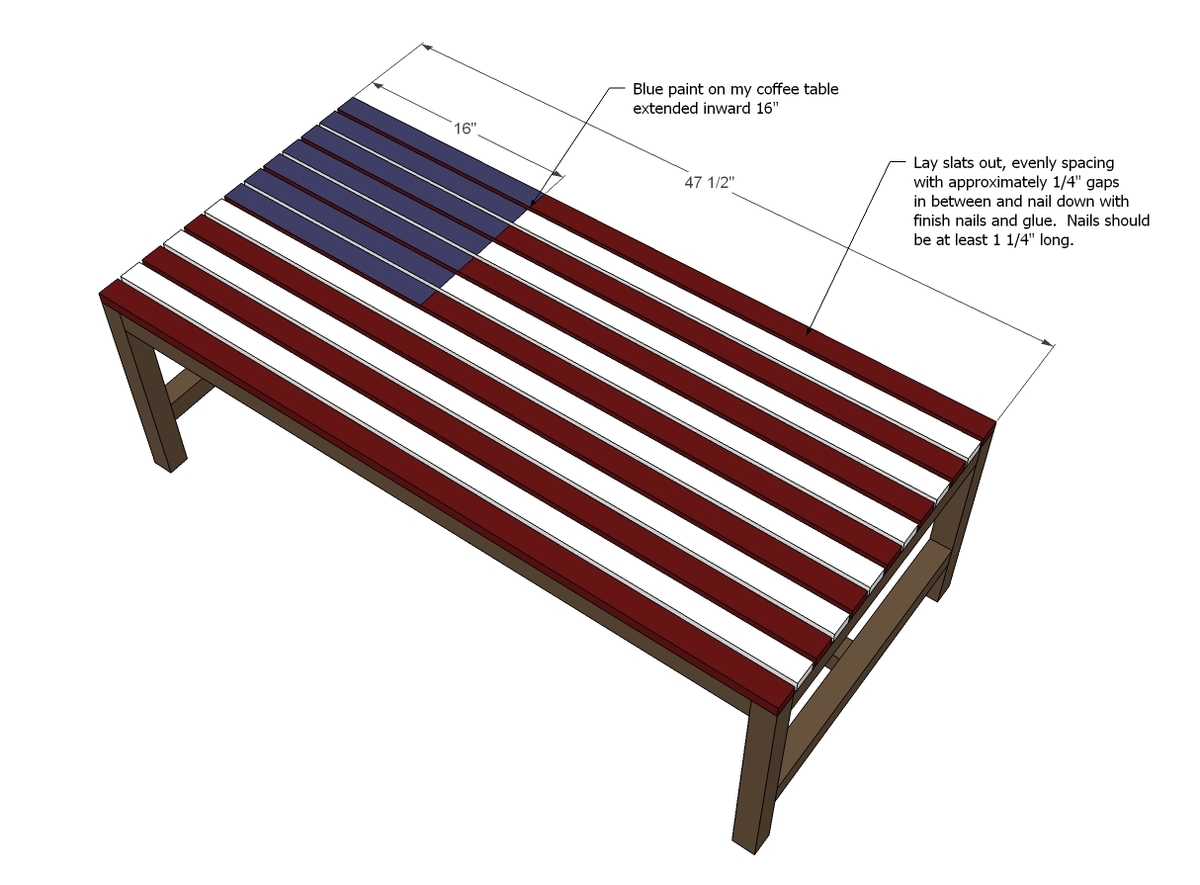
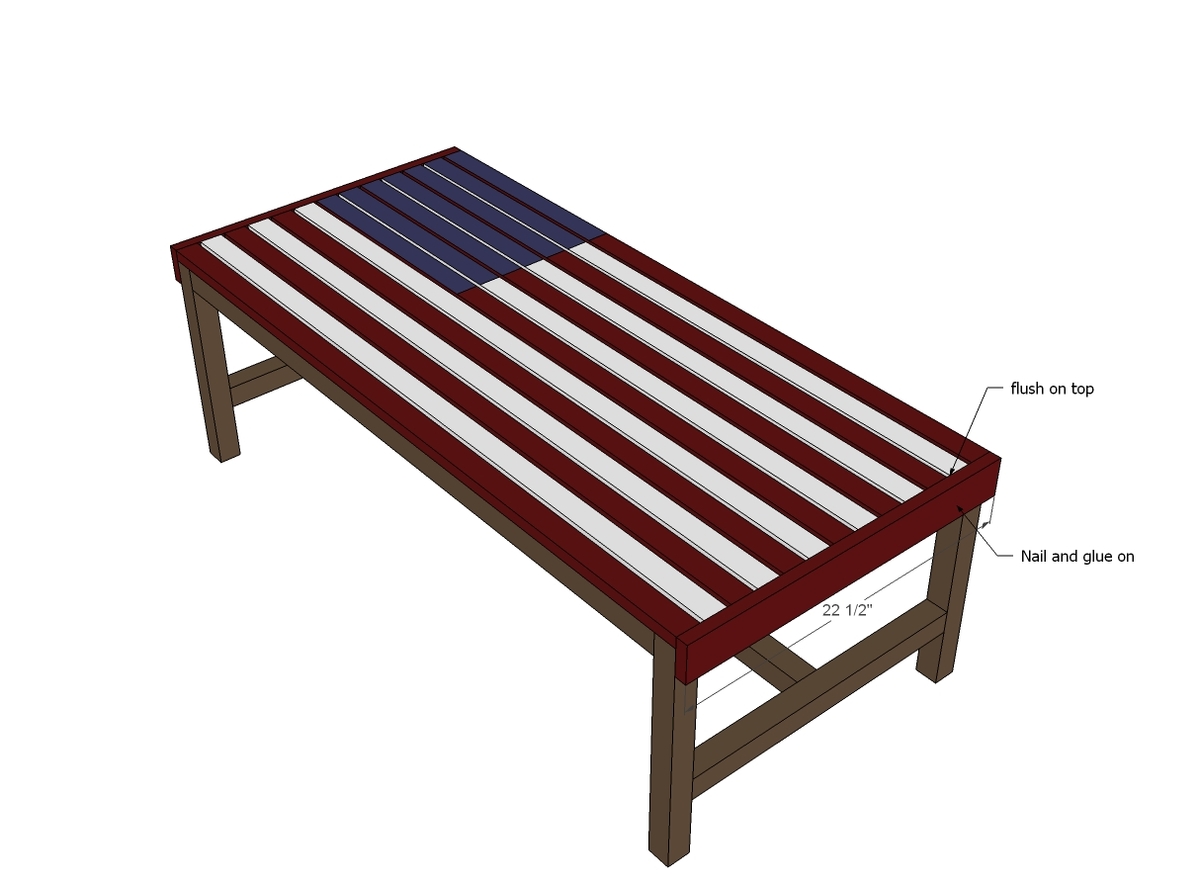
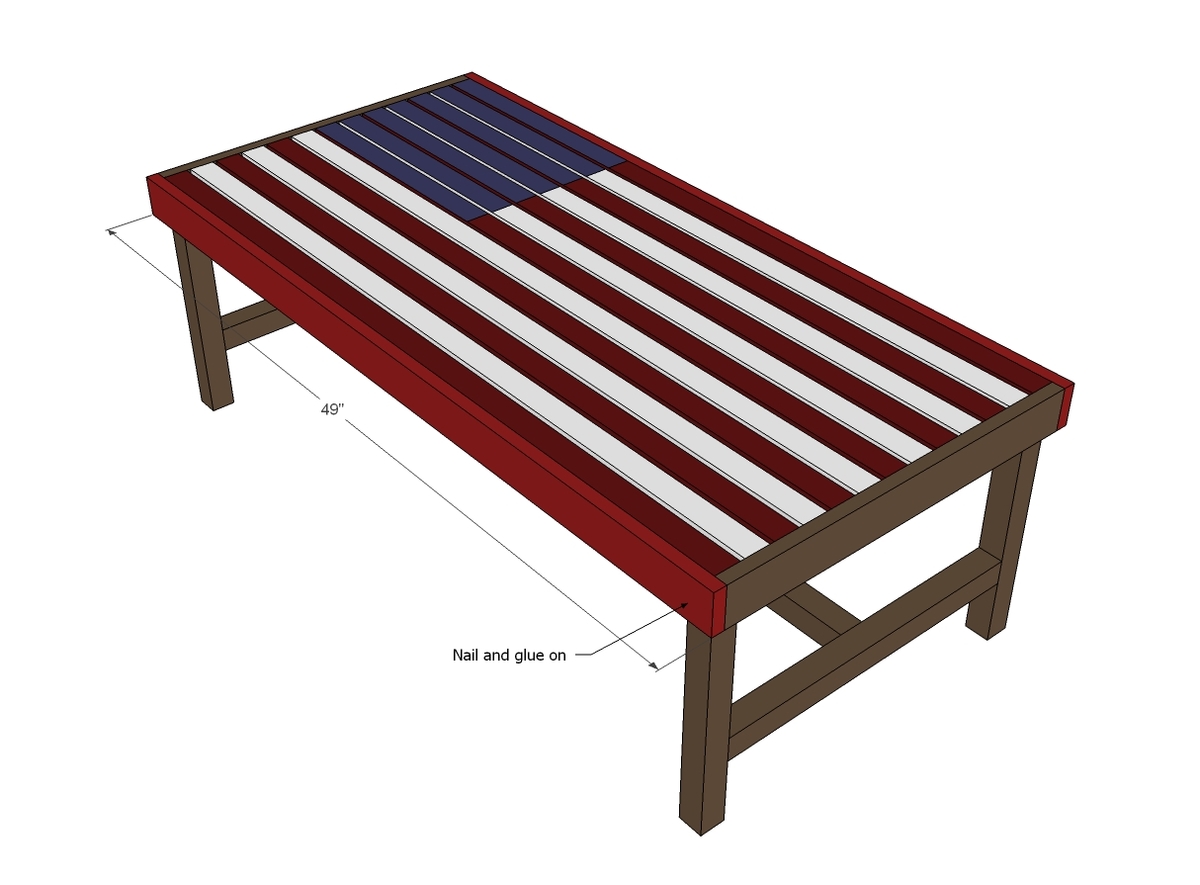
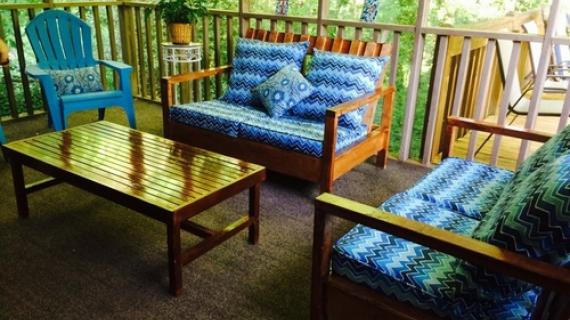

Comments
birdsandsoap
Fri, 06/14/2013 - 15:41
Cute! I love this. It just
Cute! I love this. It just screams "Summer!"
LisaMarie
Sat, 06/15/2013 - 04:02
Very cool!
This is such a great idea! Can envision a lot of other designs on the top, too. Great idea and inspiration, Ana! Keep up the good work.
bhoppy
Sat, 06/15/2013 - 19:53
Love this!!
I feel a case of the buildies coming on:-)
Two questions.. Did you finish the frame with stain and poly before adding the top slats? And what is considered exterior grade wood glue?
I have made a few outdoor furniture pieces from your plans but I've always painted them with exterior paint... I'd love to try staining something like this gorgeous table but am nervous about the finish withstanding the elements.